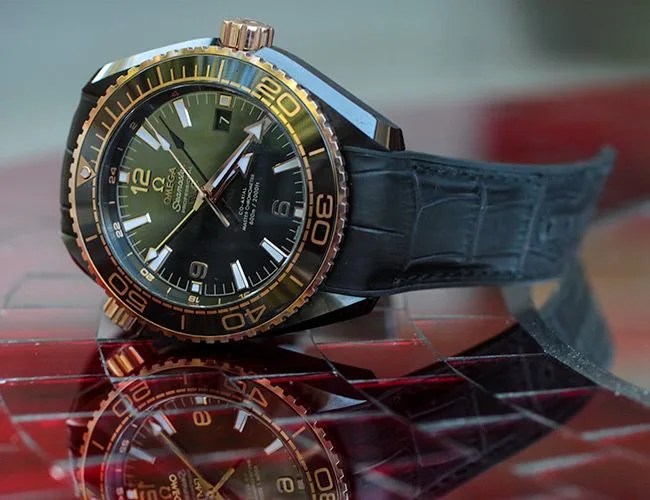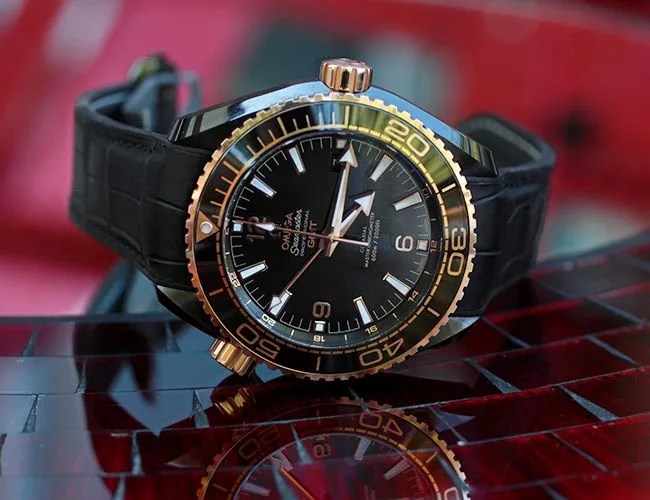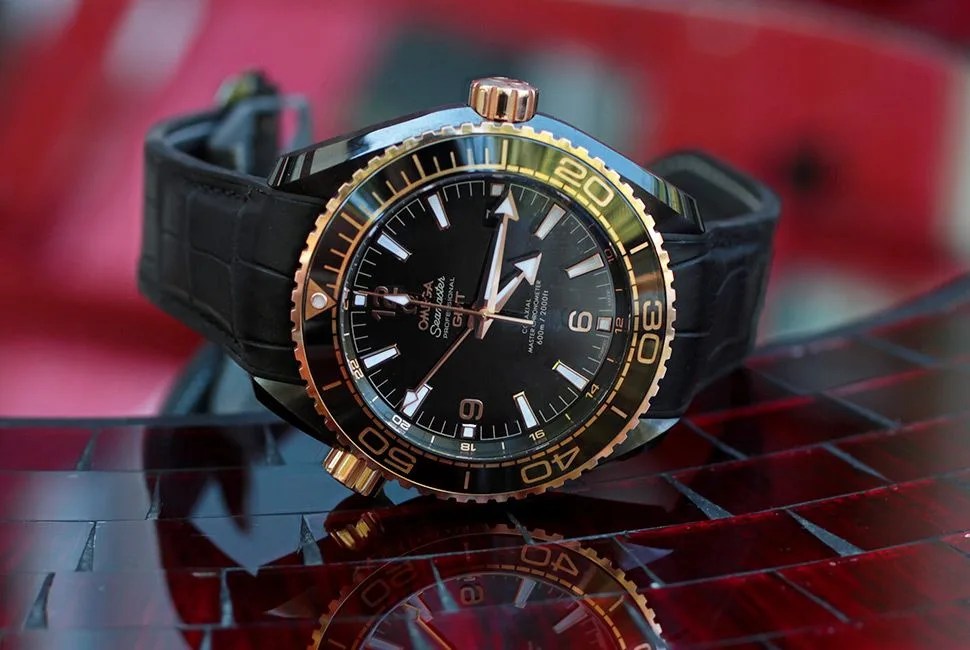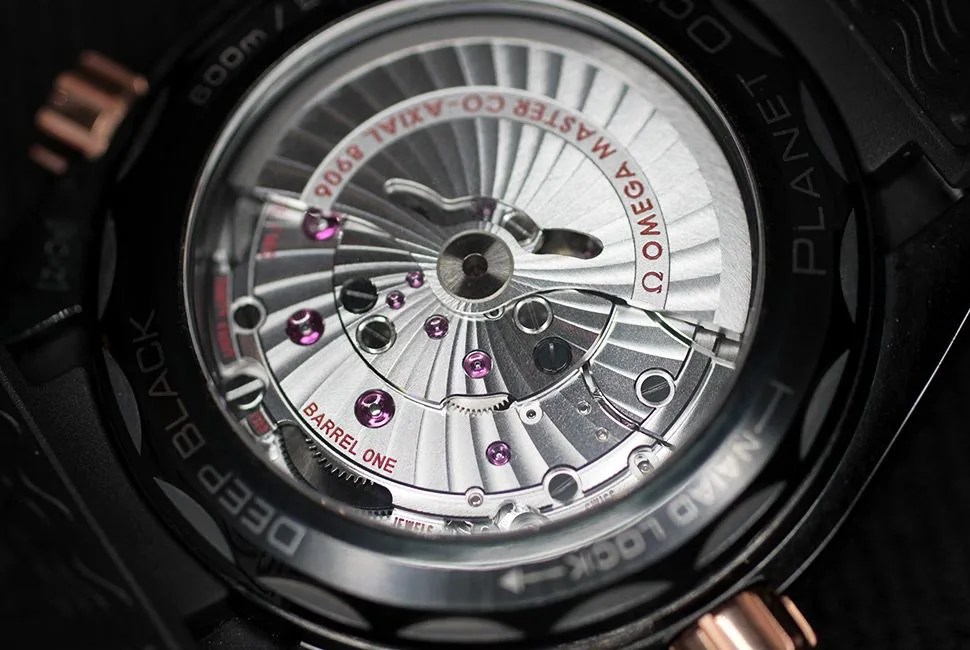3 photos
In the automotive world, we call them sleepers: cars that pack warp-speed performance beneath an unassuming exterior. These wolves in sheep’s clothing lay low and hide amongst herds of average. The secret is out on a few of them. BMW’s M5 has always been a sleeper, and the Mercedes E63 AMG Wagon is the ultimate of the breed. But they exist in the watch world, too. Even a 45mm beast like the Omega Seamaster Planet Ocean Deep Black can sneak up on you.
Like the Mercedes AMG badge, the Omega’s performance cues are there. The dial of the Deep Black boasts of its GMT complication and an impressive depth rating. It sports a helium release valve at the 10 o’clock marker. But neither of those features has anything to do with what makes the Deep Black truly special. Its pinnacle achievement is only revealed if you look very closely and at the right angles.
Etched stealthily on the dial, just below the post holding its four hands (and again on the lugs) are the letters ZrO2, the symbol for zirconium dioxide. That means that, similar to Omega’s Dark Side of the Moon Speedmaster and IWC’s Top Gun line of pilot watches, the Deep Black’s case material is ceramic. This is not typically a preferred medium for dive watch construction — aside from bezels, really — due largely to its hardness and lack of malleability. Unlike the metals usually employed for bottom time wristwear, such as stainless steel or titanium, ceramic won’t accumulate nicks and dings, though unfortunately certain types do have a propensity to shatter if hit hard enough. This trait is only amplified when the pressures of depth enter into the equation, especially those around the 600m mark.
However, ceramics born of ZrO2 are tougher than most: the phase transformation of zirconium dioxide under stress actually makes it less brittle and highly resistant to fracture, so much so that it has found favor in the dentistry industry, ostensibly for the likes of hockey players. As an added benefit, ZrO2 is extremely resistant to just about everything from acids to alkalis, as well as the oxidizing effects of both fresh and seawater. The crystalline oxide also boasts reduced electronic conductivity which, coupled with Omega’s METAS-certified 15,000 gauss resistance, means the Deep Black is damn near impervious to magnetic fields.

There are more Easter eggs to be found once you flip the Deep Black over. Housed within that harder-than-nails case lies Omega’s newest METAS-certified Master Chronometer movement, the caliber 8906, which has a 60-hour power reserve, silicon balance spring and a GMT complication. The movement lies beneath another rarity in deep-dive watches: a transparent case back that shows off the twin-barrel design of the co-axial 8906 movement and its rhodium-plated rotor.



